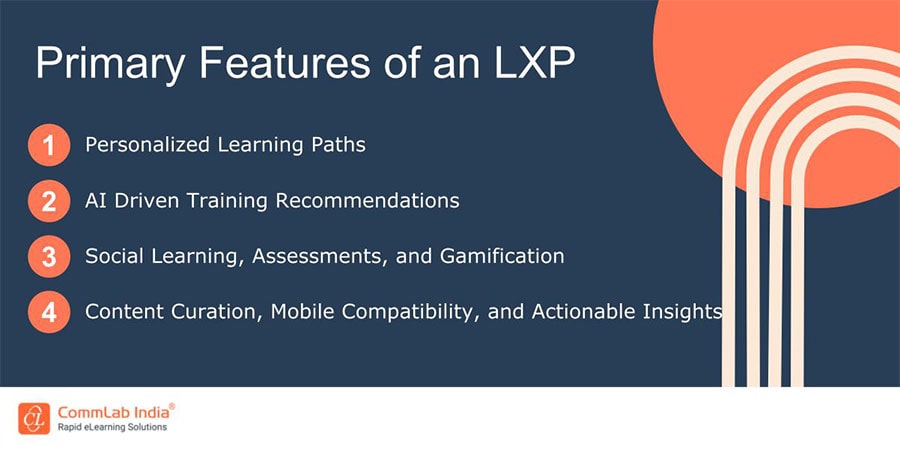The AI Advantage: Elevating Your Technical Training Experience
Explore the future of technical training with AI—personalized learning, efficiency, and scalability. Elevate your skills in the evolving tech landscape!

In the rapidly evolving world of technology, keeping your technical skills up to date is essential. Whether you're an IT professional, a software developer, or an engineer, the pace of change in these fields can be overwhelming. Traditional training methods often fall short when it comes to addressing the dynamic nature of technology. This is where Artificial Intelligence (AI) steps in, offering a powerful solution to enhance and optimize technical training. In this blog, we will explore the use of AI in technical training, discussing its advantages, implementation, and future trends.
Trying to Elevate your Technical Training Experience? Try Leveraging AI!
Here are a few advantages of using AI -
- Improved learning efficiency
- Personalized learning
- Cost-effectiveness
- Scalability
The Advantages of Using AI for Technical Training
To kick things off, let's define what we mean by AI in the context of technical training. Artificial Intelligence refers to the simulation of human intelligence processes by machines, especially computer systems. When applied to technical training, AI involves the use of algorithms and software to provide personalized and efficient learning experiences. Here are a few advantages of using AI for technical training.
1. Improved Learning Efficiency
Traditional classroom-based training often follows a rigid curriculum that may not account for individual learning speeds or comprehension levels. AI, on the other hand, introduces adaptability into the learning process. By continuously assessing the learner's performance, AI can tailor the training content to their specific needs. This personalized AI approach enhances the efficiency of learning and can significantly reduce the time required to acquire new skills.
→ Download eBook Now: The AI Revolution
2. Personalized Learning
One of the most compelling aspects of AI-driven technical training is the level of personalization it can offer. Traditional training methods often present the same material to every learner, regardless of their prior knowledge or learning preferences. AI, on the other hand, can create a unique learning path for each individual. It considers factors such as a learner's current skill level, preferred learning style, and even their past performance. This results in a highly tailored experience where learners receive content that is both challenging and within their reach, maximizing engagement and knowledge retention.
3. Cost-Effectiveness
The costs associated with traditional classroom training can be prohibitive, including expenses for travel, accommodation, printed materials, and instructor fees. AI-driven technical training can drastically reduce these costs. With AI, training can be delivered remotely, eliminating the need for learners to be physically present. Moreover, digital content can be updated and reused efficiently, reducing printing and distribution expenses. This cost-effectiveness is particularly beneficial for organizations looking to train large numbers of employees or individuals seeking affordable ways to upskill and reskill.

4. Scalability
Whether you're a small business or a large enterprise, AI-based technical training can be adapted to meet your needs. These systems are highly scalable and capable of accommodating both small and large numbers of learners simultaneously. This flexibility allows organizations to grow and adapt their training programs as they expand or shift their focus. Whether you're training a handful of employees or thousands, AI can efficiently scale to meet your requirements, ensuring a consistent learning experience for all.
Implementing AI in Technical Training
A. Selecting the Right AI Tools
Before diving into AI implementation, it's crucial to select the right AI tools for your specific training needs. Start by identifying the skills and knowledge your learners need to acquire. Analyze the skills gaps and determine the training objectives. What specific technical competencies should your learners develop? After that, you should research AI platforms that align with your training objectives. Look for platforms that offer customization and scalability.
B. Data and Content Preparation
Effective AI implementation relies on the quality and organization of data and training content. Here's what you need to do:
- Curating and Organizing Training Content: Prepare your training materials, ensuring they are up-to-date and well-organized. This step is essential for AI algorithms to work efficiently.
- Data Collection and Annotation: Collect relevant data on learner behavior and performance. Annotate this data to make it usable by AI algorithms for analysis and recommendations. Modern LXPs offer such types of recommendations and other services seamlessly. Here are a few features of LXPs -

- Customizing AI Algorithms: AI solutions should be tailored to your specific training needs. A one-size-fits-all approach might not provide the best results. Customize the AI algorithms to meet your objectives and align them with your training content.
Future Trends in AI for Technical Training
1. Adaptive Learning
AI-driven training systems use data analytics and machine learning to create adaptive learning paths. This means that the content and pace of learning can be adjusted in real-time based on the learner's progress. For example, if a learner is struggling with a particular concept, the AI can provide additional resources or offer more practice until mastery is achieved. On the other hand, if a learner quickly grasps a topic, the AI can move them forward, preventing unnecessary repetition and maintaining engagement.
2. AI, Remote Learning, and Integration with Internet of Things (IoT)
Remote learning, accelerated by AI, is likely to become the norm rather than the exception. AI will continue to enhance the virtual training experience, providing more interactive and effective remote learning environments. The convergence of AI and IoT will offer new opportunities for hands-on technical training. IoT devices can be used in tandem with AI to create immersive training experiences. For example, learners in a robotics training session can control real robots remotely, getting a practical feel for the technology.
3. AI-Powered Certification and Credentialing
AI can assist in the assessment of learners' skills and competencies. AI-based certification and credentialing systems will provide more accurate and reliable ways to evaluate a learner's technical proficiency, leading to more credible qualifications.
Wrapping Up!
In conclusion, the integration of AI in technical training is a game-changer. It offers personalized learning experiences, improved efficiency, and scalability. While there are challenges such as data privacy and ethical concerns to address, these can be managed effectively with the right approach. As technology continues to advance, so does the potential for AI in technical training. Here’s an eBook to help you understand more about leveraging generative AI for technical training and other corporate training needs.




![Digital Learning - How Multiple Industries Can Utilize it for Technical Training [Video]](https://blog.commlabindia.com/hubfs/digital-learning-multiple-industries-video.jpg)
